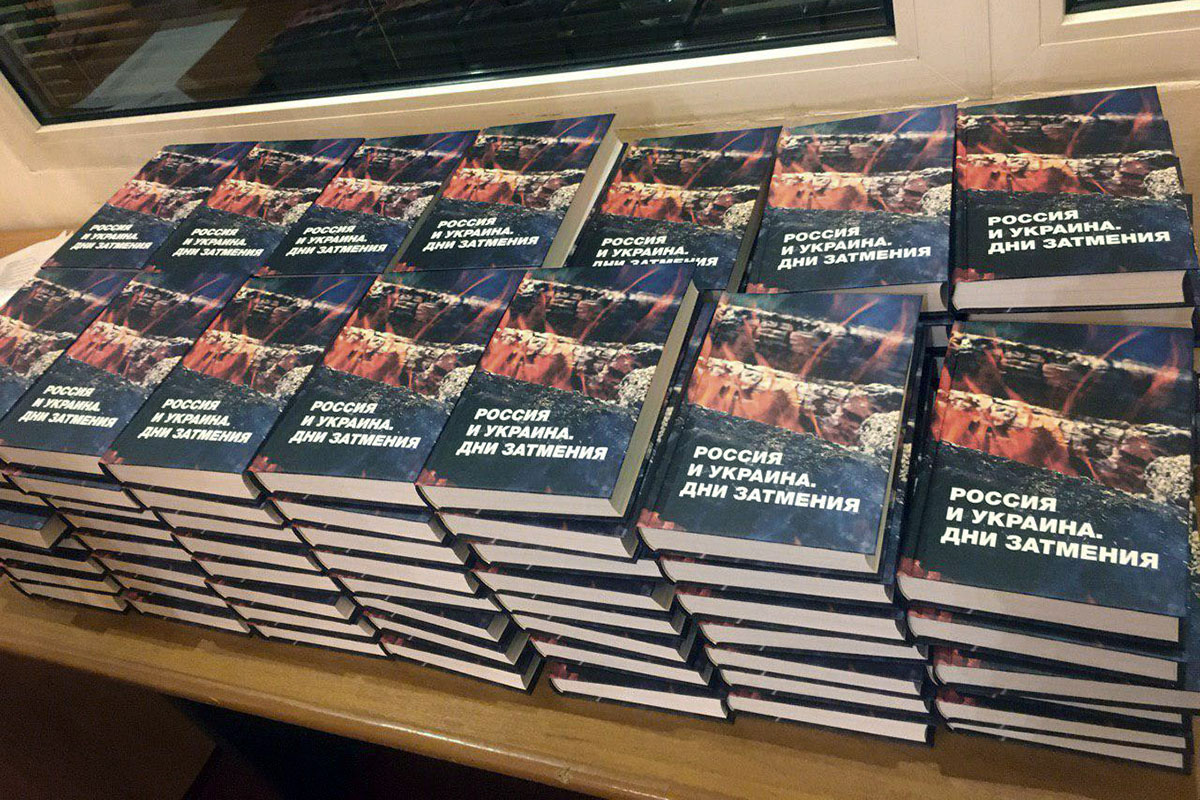For now, the project deals with the developments on the Crimean peninsula, leaving out the occupied areas in Ukraine’s easternmost Luhansk and Donetsk oblasts. Cases related to these are in further plans for the Museum’s development according to the minister of culture.
According to the online museum’s website, the project’s goal is
“to accumulate the work of state authorities, public initiatives, and international organizations on documenting the course and effects of the Russian invasion of Ukraine in order to present it all in a modern and accessible form to a wide international audience interested in Ukraine.”
The head of the Ukrainian Institute of National Remembrance (UINP), Anton Drobovych, noted at the presentation of the website on 19 October in Kyiv that the project is maintained by state agencies, as well as many NGOs that have been collecting data on acts of law and human rights violations in the temporarily occupied territory of Crimea.
Among the official agencies that took part in creating the platform were the Ukrainian Institute of National Memory, the Prosecutor General’s Office, and various Crimea-related Ukrainian bodies. Non-official actors who contributed in the development of the website were the International Renaissance Foundation and the Prometheus Security Environment Research Center.
A number of NGOs became partners of the projects, including human rights organizations with Ukrainian Helsinki Human Rights Union among them, the International Volunteer Community “Informnapalm” that deals with collecting evidence of the Russian aggression from its outset, the Institute of Black Sea Strategic Studies, and many more.
Currently, the Virtual Museum of Russian Aggression is the online collection of facts, photo and video evidence, independent media publications, oral testimonies, personal and court cases, related to the Russian occupation of Crimea which commenced back in 2014 and has been ongoing to this day.

For now, the Museum lacks data on the Russian aggression in the east of Ukraine, which started a month after Russia had annexed Crimea in March 2014. However, Oleksandr Tkachenko, Ukraine’s Minister of Culture and Information Policy, promised the extension of the collection in this direction, saying in his Telegram post,
“The exposition on the crimes in Crimea is just the beginning. Next in the plans are cases on the occupation of the Donbas,” assured the official.
The Minister believes that at present, the website would simplify the work on collecting facts for the evidence base on the annexation of Crimea.
UINP head Drobovych believes that the project might be of good use for many years to come,
“It is important for us that in 50 years, in 100 years, when people would want to investigate the Russian-Ukrainian war, the temporary annexation, occupation, that there be materials collected from eyewitnesses, based on documents of international organizations, NGOs. Verified, checked, and that this set of materials would be giving a real idea of what was happening,” he said at the project presentation, according to Ukrinform.

Further reading:
- Forced migration in Crimea as part of Russia’s ‘hybrid’ strategy
- Russia’s occupation of Crimea led to Ukraine losing 75% of its 2013 GDP
- Ukraine recognizes three Crimean peoples as indigenous, infuriating Russia
- Win for Ukraine as PACE adopts strong resolution in support of Crimean Tatars persecuted by Russia
- The myth of “historically Russian Crimea”: colonialism, deconstructed
- 7 myths driving Russia’s assault against the Crimean Tatars
- Russia’s occupation of Crimea led to Ukraine losing 75% of its 2013 GDP
- Win for Ukraine as PACE adopts strong resolution in support of Crimean Tatars persecuted by Russia
- Seven years of occupation of Crimea: human rights activists systematise human rights violations on peninsula
- Crimea’s economy. When Russia’s words and figures don’t meet (2016)
- Sanctions on Russia are working, but they’re not enough
- More evidence of Russia’s aggression against Ukraine discovered by digital sleuth as Russia keeps denying its involvement
- Ukraine, Crimean Platform, and the Witches’ Sabbath: this week’s Russian propaganda
- Crimean history. What you always wanted to know, but were afraid to ask






